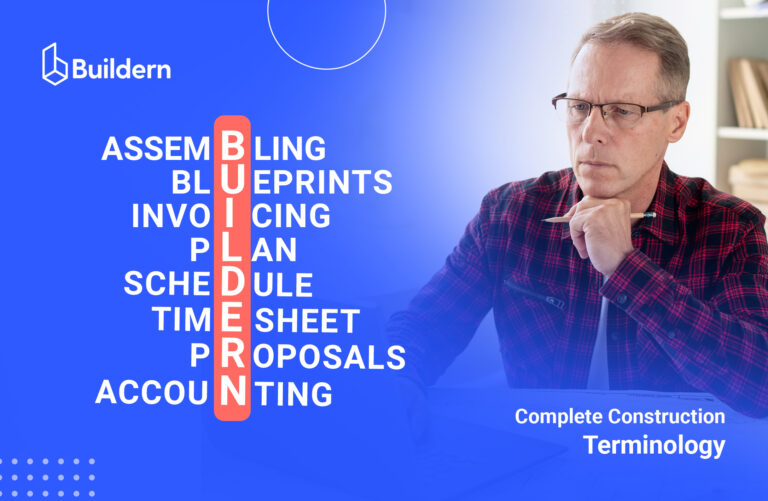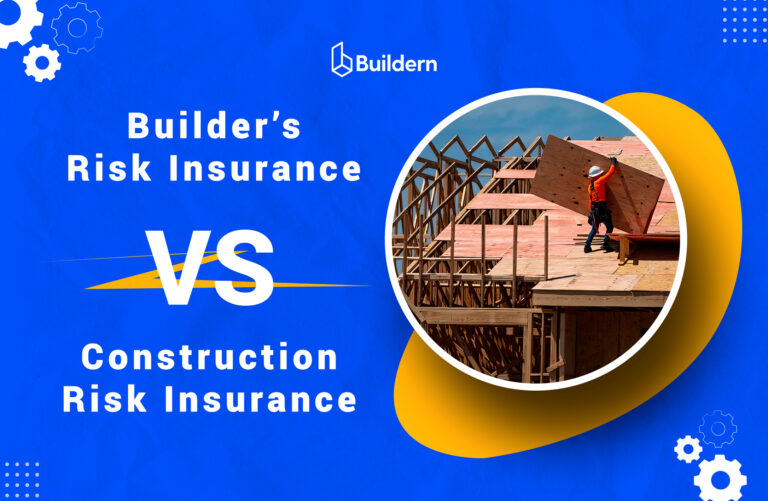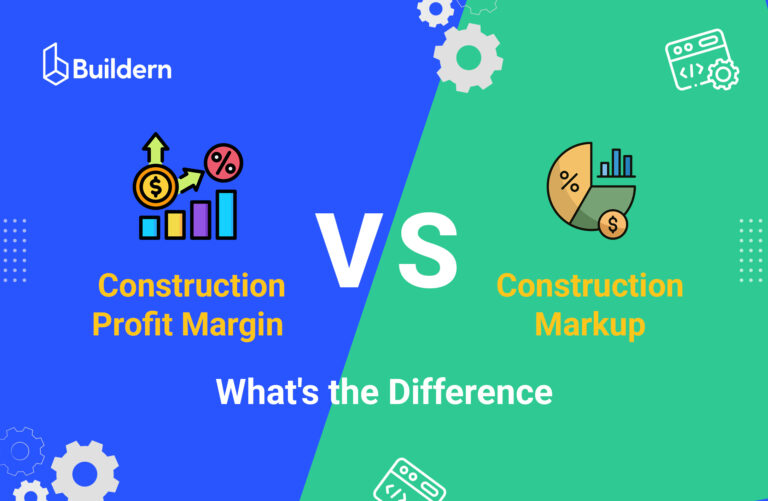Complete Construction Terminology Cheat Sheet: US and AU Specific

Have you ever felt like construction language is a secret code only insiders understand?
Don’t worry; we’ve got you covered!
Welcome to the fascinating construction world, where a shared language is the key to unlocking successful projects and seamless communication. Whether you are a seasoned professional or an aspiring buildern ready to take on new challenges, understanding construction terminology is extremely important.
In this article, we will offer you a construction terminology cheat sheet to unveil the jargon used in the United States (US) and Australia. We will break down the language barriers, equipping you with the knowledge to help you easily navigate the construction landscape.
Table of Contents
- Importance of Construction Terminology
- Overview of the Construction Industry in the US and Australia
- Understanding the Basics of Construction Terminology
- Building Terminology: Pre-Construction Terminology
- Site Work Construction Terms
- Building Terminology: Construction Phase
- Specialized Construction Vocabulary
- Construction Equipment and Machinery
- Construction Documentation
- Construction Safety and Regulatory Terms
- US and Australia-Specific Construction Jargon
- Your Complete Construction Dictionary in One Place
- The Bottom Line

TL;DR
- The article will guide you through the construction terminology used in the US and Australia, including pre-construction and construction phases.
- We will dig deeper into the specialized vocabulary for construction equipment, machinery, documentation, and safety regulations.
- We will explore the comprehensive guide to construction jargon to improve communication within the team.
Importance of Construction Terminology
Building terms and unique collocations are like the secret sauce that makes communication in the industry smooth and efficient. It’s the language that all the pros speak, from architects and engineers to contractors and subcontractors. Using the same construction lingo can minimize misunderstandings and keep errors at bay. This leads to better productivity and efficiency, satisfied clients, and shorter project timelines – everything that makes construction successful.
Overview of the Construction Industry in the US and Australia
Before delving into the construction terminology, let’s briefly examine the construction industry in both the US and Australia.
These two countries have thriving construction sectors characterized by large-scale infrastructure projects, residential and commercial developments, and innovative architectural designs.
The US construction industry plays a vital role in the country’s economic growth, contributing significantly to infrastructure development. According to Statista, the industry is estimated to reach 2.24 trillion U.S. dollars by 2027. The US construction market is diverse and highly competitive, with numerous regulations and standards in place to ensure safety, quality, and compliance. However, this doesn’t hinder US construction professionals’ innovative spirit.
Similarly, Australia’s construction industry is a major contributor to the country’s economy. The sector encompasses various segments, including residential, commercial, civil engineering, and mining. Recent data estimates the Australian construction sector at $180.90 billion and estimates it to reach $230.89 billion.
Understanding the Basics of Construction Terminology
The basics of construction terminology comprise a wide suite of vocabulary, from foundation terms to a more specialized language suitable for anyone working in the field. Below, let’s explore the core concepts that make up the industry.
- Building codes and regulations: These represent a unique set of guidelines that every builder, contractor, and industry representative must follow. These guidelines cover everything from how structures are designed to the electrical systems, plumbing, fire safety measures, and even accessibility. Following these codes is a must-do to stay compliant and make sure everyone inside the building is secure and protected.
- Architectural plans and blueprints: These are the ultimate roadmaps that guide the construction process. Architectural plans and blueprints are the result of serious artistic and technical skills. These drawings include all the juicy details, like how the floors are laid out, how the building looks from different angles, and even the little intricacies of the construction process.
- Inspections: Throughout the construction process, inspections are carried out to make sure everything is going according to plan. This happens at different project stages to verify that everything is up to code and meets the approved plans and standards. As a result, builders are flooded with never-ending paperwork that piles up on the shelves. In such scenarios, utilizing advanced construction project management software can make all the difference, allowing you to securely store all your documents in one centralized location.
- Construction Permits: Getting all the necessary permits from logical authorities is an important step you can’t skip. These permits are like golden tickets granting legal permission to bring your construction plans to life.
Building Terminology: Pre-Construction Phase
Now that we’ve laid down the groundwork, it’s time to dive deep into the exciting world of construction slang. The pre-construction phase involves the preliminary steps taken before the actual construction work begins. This phase sets the groundwork for the project and involves activities such as site selection, feasibility studies, project estimation, conceptual design, etc.
Site Selection and Evaluation
The process of site selection involves identifying and evaluating potential locations for a construction project. Factors such as accessibility, proximity to resources, environmental impact, and zoning regulations are considered during this stage.
Feasibility Studies
Ever wondered how builders determine if a construction project is worth pursuing? That’s where feasibility studies come into play. These studies are like detective work, carefully assessing the viability and potential success of a project before any hammers start swinging.
Conceptual Design
The term refers to creating a preliminary design concept for a construction project. It focuses on the project’s overall vision, function, and aesthetics, laying the groundwork for the subsequent detailed design stages.
Project Estimation
One of the biggest challenges is figuring out how much a project will cost and how long it will take to complete. That’s where project estimation comes in, like a superhero with a trusty calculator. When it comes to precise and professional estimation, a reliable construction project management solution is a lifesaver, allowing you to generate comprehensive estimates considering every detail with just a few clicks.

Site Work Construction Terms
Once the pre-construction phase is complete, the site work construction phase begins. This phase involves activities that prepare the construction site for the building process.
- Preparing the construction site: The process involves tasks that make the site ready for construction activities. These tasks include cleaning the land, setting up temporary facilities, and establishing access roads.
- Site clearing and grading: Site clearing involves removing vegetation, debris, and any obstacles from the construction site. Grading refers to leveling and shaping the land to the desired contour, ensuring proper drainage and foundation stability.
- Excavation and Earthmoving: These terms refer to digging soil and rocks from the site to prepare for constructing foundations, basements, or utility trenches. Earthmoving refers to reshaping the terrain by moving and redistributing soil.
- Soil Stabilization: Soil stabilization refers to the techniques employed to improve the engineering properties of soil and ensure its stability. Methods such as compaction, soil reinforcement, chemical stabilization, and soil grouting are used to enhance soil strength and prevent settlement or erosion.
Building Terminology: Construction Phase
In the construction phase, all the hard work, planning, and preparation come together to create something remarkable. Without further ado, let’s explore some core terms associated with this phase.
Foundation Systems
Providing structural support and stability for buildings, the foundation system is the rock-solid base that ensures everything stays upright and secure. Common types of foundation systems include shallow foundations and deep foundations, each coming with its subcategories:
- Shallow foundation
- Individual footing or isolated footing
- Combined footing
- Strip foundation
- Raft or mat foundation
- Deep Foundation
- Pile foundation
- Drilled Shafts or Caissons
The choice of foundation system depends on factors such as soil conditions, building loads, and structural design requirements.
Structural Framing
This is the framing of the building that supports the floors, walls, and roof. The structural framing is typically constructed using steel, reinforced concrete, or timber.
The so-called skeleton of the building is a complex puzzle of materials. Structural elements such as beams, columns, and trusses work together to distribute the loads and maintain the stability of the building.
Roofing and Cladding
The systems protect the building from external elements and provide insulation. From flat roofs to sloped roofs, there are various types to consider. Roofing materials include shingles, tiles, metal panels, and membranes, each with its unique characteristics and benefits.
Cladding is like the stylish exterior skin of the building, adding beauty and protection. Cladding materials can vary from brick and stone to metal and glass, allowing for endless design possibilities.

Specialized Construction Vocabulary
In the construction industry, specific areas demand unique knowledge and expertise. These specialized domains bring an extra layer of excitement and complexity to the mix. Let’s explore some of them.
- Electrical systems and wiring: Involving the installation of wiring, fixtures, and equipment to provide power and lighting within a building, electrical systems are crucial in today’s fast-paced world. From installing light fixtures to setting up intricate electrical panels, electricians bring life to spaces with the flick of a switch. Terms related to electrical systems include circuits, breakers, outlets, switches, grounding, and conduits.
- Plumbing: When it comes to plumbing systems, it’s all about making sure water flows smoothly and efficiently. From installing pipes carrying water to fixtures like faucets, showers, and toilets, plumbers ensure that we have a reliable water supply. Plumbers also take care of wastewater management, making sure it is safely removed from our living spaces.
- HVAC: Standing for heating, ventilation, and air conditioning, HVAC systems create the perfect indoor environment. Heating systems provide warmth during chilly winters, ensuring cozy comfort when the temperature drops. HVAC specialists install boilers, furnaces, and radiators, transforming buildings into cozy sanctuaries.
- Interior finishes and flooring: When it comes to interior finishes, it’s all about the materials and treatments applied to the interior surfaces of a building, turning them into stunning works of art. But interior finishes go beyond just walls and floors. They extend to the ceilings, where innovative treatments like decorative moldings, recessed lighting, or intricate ceiling tiles can elevate the ambiance of a room. Each detail contributes to the overall aesthetic and creates a space that is uniquely yours.
Construction Equipment and Machinery
Like any other kind of business, construction requires certain types of equipment and machinery. Let’s dive deeper to see the most common ones used in construction.
Tools of the Trade
Tools used in construction include hand tools and power tools. Hand tools include hammers, screwdrivers, wrenches, and measuring devices, while power tools encompass drills, saws, sanders, and pneumatic tools. Power tools are easier to use than hand tools but require more care when operating them.
Excavators and Bulldozers
These are the heavy machinery used for digging, moving earth, and lifting heavy loads. With their hydraulic arms and buckets, excavators are designed to dig deep into the earth, creating trenches and foundations and excavating large quantities of soil or rock. Bulldozers, on the other hand, are the muscle of earthmoving. These powerful machines have a large blade at the front, primarily used for pushing and leveling soil, debris, or materials.
Cranes and Lifts
Cranes and lifts are essential for any construction project. They are used to lift and move heavy on-site objects. Cranes come in various forms, each designed for specific lifting needs. Lifts, such as elevators and scissor lifts, transport people and materials vertically within a building.
Concrete Mixers and Pumps
Concrete mixers mix cement, aggregates, and water in precise proportions to create the magical concoction we know as concrete. They come in various sizes, from small portable units for smaller projects to massive trucks. Concrete pumps, on the other hand, are mighty machines with a powerful pump and a long, flexible hose or boom. The pump sucks up the concrete from the mixer and propels it through the hose or boom, allowing it to be precisely placed at the construction site.
Construction Documentations
Whether digitalized or printed, construction documentation is vital in keeping projects organized, ensuring clarity, and preserving crucial information. From initial planning to project completion, various terms and processes are involved in construction documentation.
- Blueprints: Referring to the traditional method of creating technical drawings, blueprints use blue lines on a white background. While digital formats are now more common, the term “blueprints” is still used to describe detailed construction drawings.
- As-built drawings: These are updated versions of the original drawings, reflecting the project’s actual construction. They capture any modifications or deviations made during the construction process and serve as a record for future reference.
- Change order: It is common for the project budget to change through construction as unforeseen costs and changes arise. Change orders document any changes made to the original scope of work or budget and must be approved by the project owner. These are typically in the form of a written document that outlines the requested changes and includes authorization from the project owner. If you are up for an ultimate solution to streamline change orders and simplify your project management, Buildern has a revolutionary system for handling change orders.
- Requests for Information (RFIs): These are the formal inquiries submitted by contractors or subcontractors seeking clarification or additional information about the project. RFIs help resolve uncertainties or discrepancies in the construction documentation. They should include the contractor’s name and contact information, a brief description of the issue or discrepancy, and necessary supporting documents.
💡Recommended reading: What Is Construction RFI? 3 Steps to Handle Automated Processes
Construction Safety and Regulatory Terms
Safety is paramount in the construction industry, and compliance with safety regulations is essential to protect workers and prevent accidents. This section covers terminology related to safety equipment and regulations in the US and Australia.
- Personal Protective Equipment (PPE): The term refers to gear worn by workers to protect themselves from hazards. This includes hard hats, safety glasses, gloves, safety boots, and high-visibility vests.
- OSHA Compliance (US) and WorkSafe (Australia): In the United States, the Occupational Safety and Health Administration (OSHA) sets and enforces safety standards for the construction industry. WorkSafe, on the other hand, is the Australian government agency responsible for regulating workplace health and safety.
- Fall Protection Systems: These are designed to prevent workers from falling from heights. Fall protection systems include guardrails, safety nets, personal fall arrest systems, and scaffolding with adequate fall protection measures.

US and Australia-Specific Construction Jargon
In the vast and diverse construction world, every country has its unique construction jargon and terminology. The United States(US) and Australia are no exception. Let’s explore some of the specific construction jargon used in these countries, giving you a glimpse into the fascinating linguistic nuances of each jargon.
US Construction Jargon
- Punch List: A punch list refers to items or tasks that must be completed or corrected before a project can be considered finished. It is typically created towards the end of a project to ensure all necessary finishing touches are addressed.
- Change Order: A change order is a document that outlines modifications or adjustments requested during the construction process. It details the scope, cost implications, and other necessary changes to the original plans.
- Bid: In the US, a bid refers to a formal proposal submitted by a contractor or subcontractor to compete for a construction project. It includes the estimated costs, timeline, and other relevant information.
- Takeoff: Takeoff refers to the process of quantifying materials based on the blueprints. IT helps to estimate the amount of materials needed, as well as labor and equipment, ensuring that everything goes according to the plan.
Australia-Specific Construction Jargon
- Tradie: In Australia, the term “tradie” refers to a tradesperson or a skilled worker in the construction industry. It’s an affectionate term for those working in trades such as carpentry, plumbing, electrical work, and more.
- Site Shed: A site shed in Australia is a portable structure or container used as a temporary office or storage space on construction sites. It provides a convenient workspace and houses important documents, equipment, and supplies.
- Bricky: The term “bricky” is an Australian colloquialism for a bricklayer. It refers to professionals who specialize in laying bricks and building structures using bricks as the primary construction material.
- Variations: Same as the change orders discussed earlier, variations denote a change to the original scope of work, which can be in terms of materials or design.
These are just a few examples of the construction jargon used in the US and Australia. Each country has its unique terminology, reflecting its construction practices, regional preferences, and industry culture.
Your Complete Dictionary in One Place
Construction terminology doesn’t end here. There are still so many things to learn and explore. Here is your supplementary dictionary for construction terminology to get ahead of the game and start a successful construction company.
Types of Builders
General contractor: A contractor who coordinates multiple trades on a project. Generally uses subcontractors to perform the majority of the work.
Subcontractor: A person specialized in one trade. Such as electricians, plumbers, roofers, etc.
Custom home builder: This is a contractor that builds new homes for specific clients.
Home builder: A builder that builds homes. Generally refers to a custom home builder as opposed to a developer.
Construction Manager: Generally refers to a person or company that is only in charge of managing the construction process. On larger projects, this could be a Construction Manager to manage a GC.
Design Team
Structural engineer: Structural engineers generally work for the architect on a full-time or project basis. The builder may have direct contact with the engineer in most cases to clarify structural plans and conduct structural observations.
Architect: Designs the floor plan of the building, facade, layout, etc. Generally, they do not get involved in the structural work. Nor do they get involved in the interior design. Sometimes referred to as a designer.
Interior Designer: Designs the interior of a house or building. Interior designers may also be in charge of furnishing the house. Generally, interior designers work in high-end residential homes.
Other Terms
Vendor/Supplier: Any person or company that provides a product/ goods.
Punch List: Refers to a list of outstanding tasks that must be completed. Usually, a punch list is used at the end of a project.
Allowances: A budget set at the beginning of a project determines how much money is set aside for a certain item with a variable cost. This can be defined and put in different units: per item, per sq ft., etc.
Work order: A document that states the scope of work and any other details needed to complete a given project properly. It may also include a material list.
Bottom Line
Construction terminology is more than a set of words: it is the cornerstone of clear communications and successful projects. As the industry continues to evolve rapidly, so does the terminology associated with it. Having a solid understanding of construction terminology and mastering all the nuances will allow you to collaborate with your team effectively, minimizing the likelihood of misunderstandings and costly mistakes.



